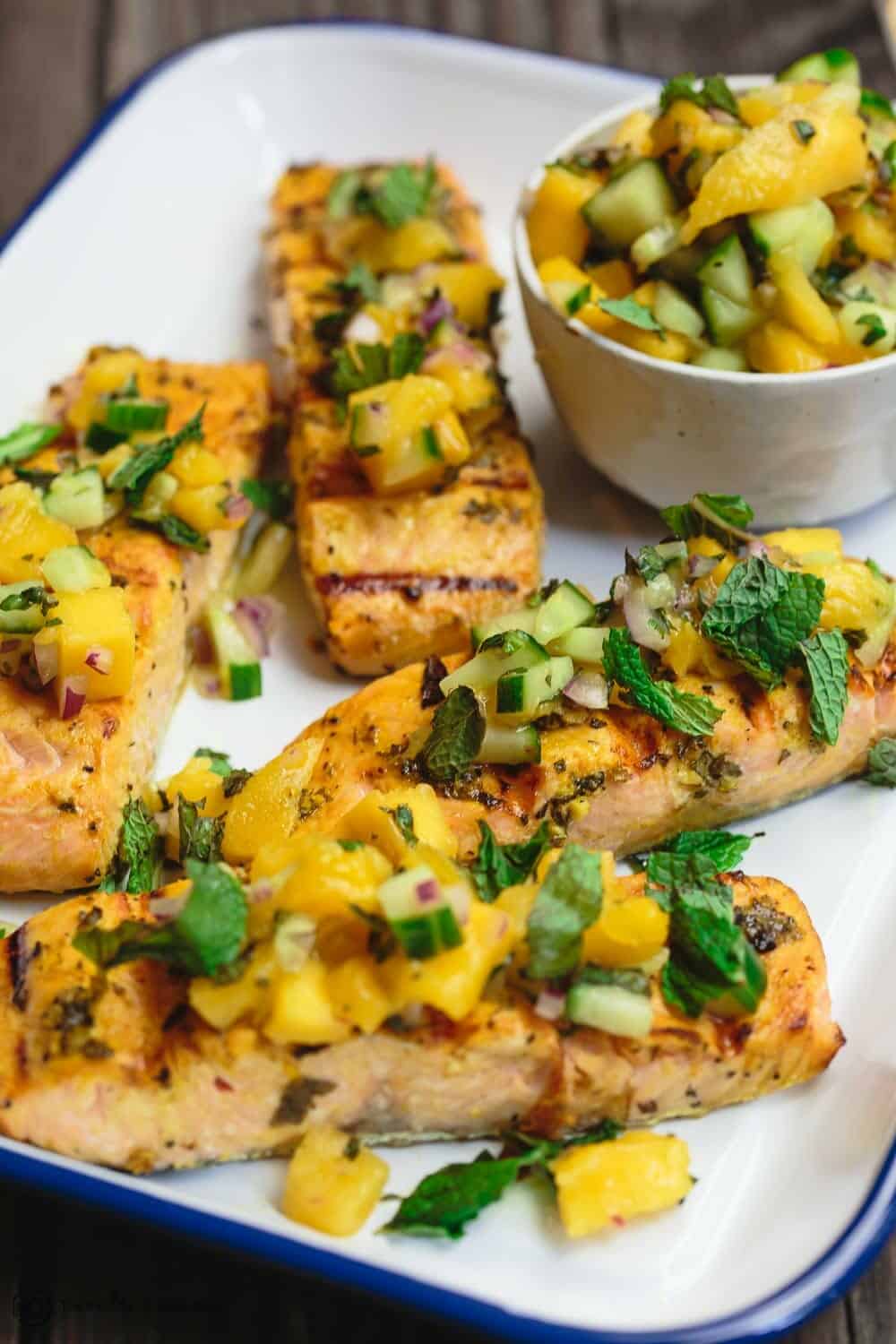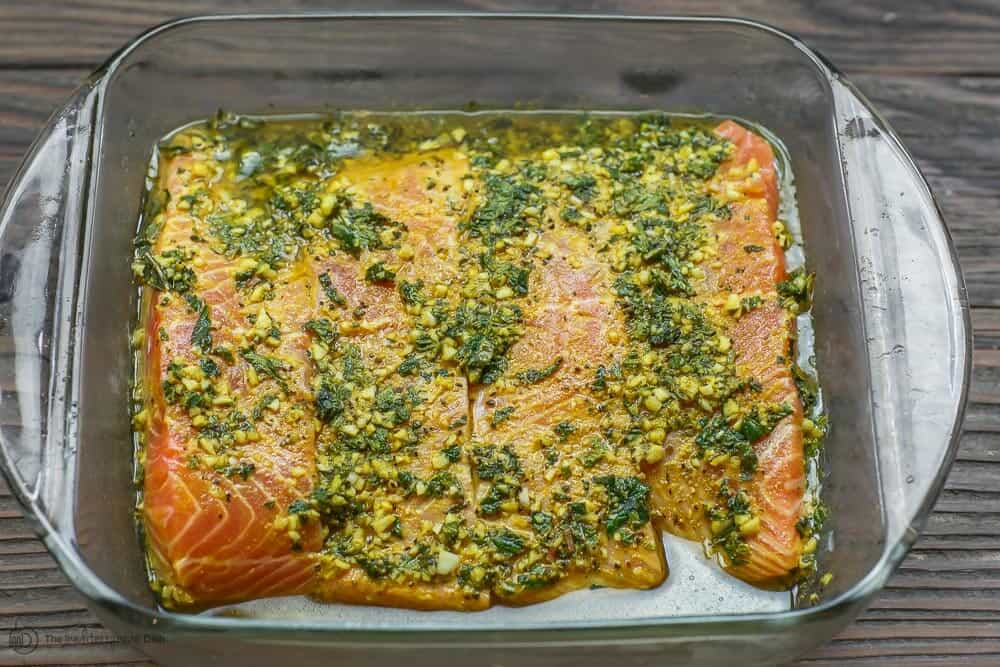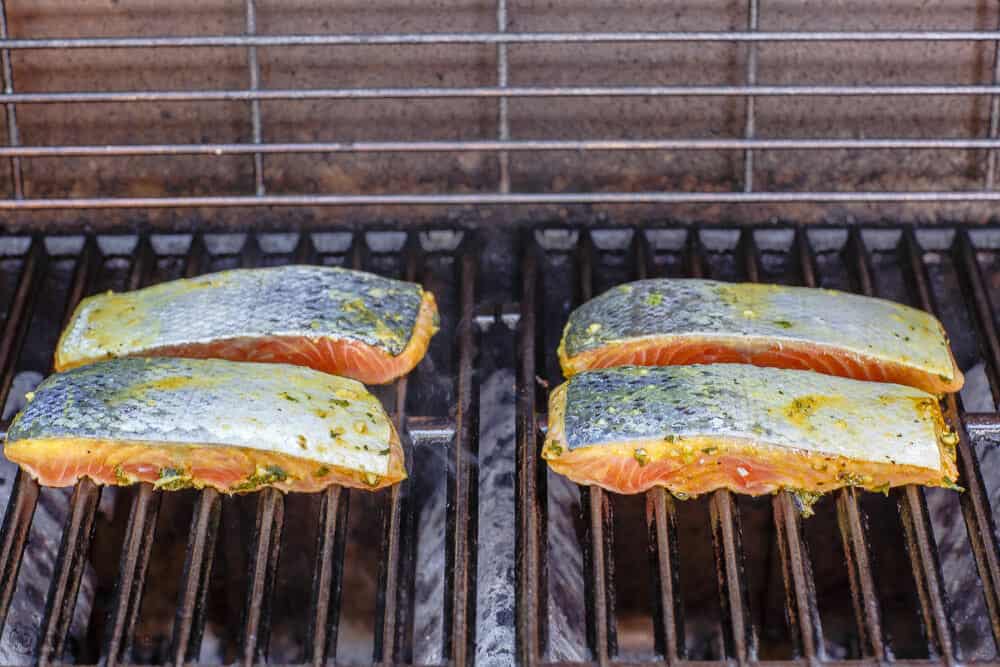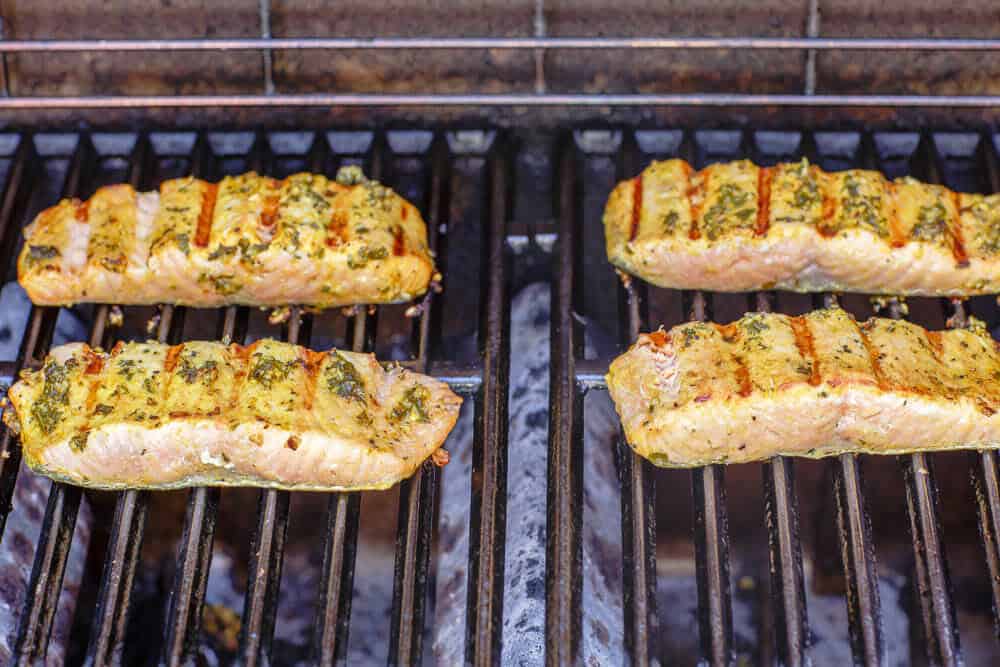Grilling salmon to tender, flaky perfection is easy when you know the right technique. The age-old question is – do you grill salmon over direct or indirect heat? The answer is…both! By searing salmon briefly over direct high heat, then moving it to indirect lower heat to finish cooking, you get the best of both worlds – a nice charred exterior and a moist, tender interior.
In this article, we’ll explain the advantages of direct and indirect grilling for salmon and walk through a foolproof process for grilling salmon flawlessly every time. Keep reading to become a salmon grilling pro!
The Benefits of Direct vs. Indirect Heat for Grilling Salmon
Direct heat involves grilling directly over the heat source – flames, hot coals or burner elements. It delivers intense heat that sears and caramelizes the food surface.
Benefits of direct heat for salmon:
- Creates delicious browning and charring on the surface
- Intensifies flavor from marinades and spice rubs
- Cooks the exterior faster so the interior doesn’t overcook
Indirect heat involves grilling off to the side of the heat source. The food cooks more gently from the ambient heat in the grill, without direct exposure to the flames.
Benefits of indirect heat for salmon:
- Allows salmon to cook through without burning the exterior
- Distributes heat evenly to prevent overcooking
- Keeps salmon moist and tender
Step-By-Step Guide for Grilling Salmon to Perfection
Follow these simple steps for grilled salmon with a crisp browned exterior and a tender juicy interior
1. Prepare the Salmon
- Pat salmon fillets dry with paper towels.
- Lightly brush both sides with oil. This prevents sticking.
- Season as desired with salt, pepper, herbs, spices or a dry rub.
2. Prepare the Grill
-
If using gas: Preheat grill on high. Turn one burner to low for indirect cooking.
-
If using charcoal Bank hot coals to one side, leaving the other side empty
-
Oil the grill grates using a brush or paper towel held with tongs.
3. Sear the Salmon Over Direct High Heat
-
Place salmon presentation-side down over direct heat.
-
Sear for 2-3 minutes until browned.
4. Finish Cooking Over Indirect Low Heat
-
Using a spatula, flip salmon and move it to indirect heat.
-
Cover grill and cook until done, about 10-15 minutes depending on thickness.
-
Salmon should flake easily and be opaque throughout when ready.
-
For added flavor, brush with glaze or melted butter during last 2 minutes.
5. Rest and Serve
-
Let salmon rest off grill for 5 minutes before serving.
-
Serve salmon warm with desired sides and toppings. Enjoy!
Salmon Grilling Tips & Tricks
-
For best results, use wild-caught salmon fillets of even thickness.
-
Grill salmon with the skin on for added moisture and flavor.
-
If salmon sticks when flipping, let it sear another minute or two until it releases easily.
-
Use a foil drip pan under indirect side to prevent flare-ups from drippings.
-
Watch salmon closely to prevent overcooking. Total grill time is only 10-15 minutes.
-
Let salmon rest before serving so juices redistribute evenly.
Frequently Asked Questions About Grilling Salmon
Should you grill salmon on direct or indirect heat?
The best way to grill salmon is to sear it briefly over direct high heat, then move it to indirect lower heat to finish cooking. This gives you the caramelized exterior from direct heat along with gentle, even cooking throughout from indirect heat.
What temperature should you grill salmon?
Preheat your grill to about 450-500°F for direct grilling. For indirect grilling keep temps around 325-375°F, adjusting lower if needed to prevent overcooking. Use an instant-read thermometer to check doneness – salmon is best cooked to medium-rare at 120-125°F internal temp.
How long does it take to grill salmon fillets?
Salmon fillets take only 10-15 minutes total to grill from start to finish. Sear for 2-3 minutes per side over direct heat, then finish cooking over indirect heat until opaque throughout and flakes easily, about 8-10 more minutes depending on thickness.
Should you flip salmon on the grill?
Yes, it’s important to flip salmon fillets at least once during grilling. Sear the presentation side over direct heat first. Flip over, move to indirect heat and grill second side until cooked through. Flipping distributes heat evenly and prevents burning or overcooking.
Should salmon skin be on or off for grilling?
Salmon skin can be left on or removed before grilling. The skin helps hold the fillet together and adds moisture, but also takes longer to crisp up. Leaving skin on is recommended, but remove if desired before eating.
Conclusion
Grilling salmon using a combination of direct and indirect heat delivers tender, flaky fish with a crisp, caramelized crust every time. Follow this simple process for grilling salmon to perfection. In about 15 minutes, you’ll have delicious, foolproof salmon fillets ready to enjoy. Grilled salmon is easy, fast, and so flavorful – the perfect hearty summer meal. Give this method a try and you’ll have salmon grilling mastered in no time!

The best salmon for grilling
Whether you’re working with wild-caught or quality, responsibly raised fish, the cut of salmon will make a difference. Here is what I look for grilling:
- Center-cut salmon fillet: The center-cut part of the fish t is thicker and more uniform so it will cook more evenly(No dry edges and undercooked middles here!)
- Skin-on salmon: Particularly if you’re cooking it directly on the grill, it’s a good idea to use skin-on fish fillets. The skin holds the salmon together as it cooks over dry heat, and it also imparts good flavor as it releases fat that keeps the fish moist. But if you only have skinless salmon fillet, I recommend grilling the fish in foil instead.

How to grill salmon
Cooking salmon on the grill directly over the hot grates will take less than 10 minutes! Here is how:
- Season the salmon. Pat the salmon dry and season well (see the seasoning and marinade ideas above). You can refrigerate the marinated fish for 20 minutes or so while you heat up the grill or work on sides.

- Start with high direct heat. The grill should be heated to around 450 degrees F. I use a gas grill, but you can also use a charcoal grill.
- Oil the grates. Brush the grates generously with oil. This is so important to make sure the salmon does not stick to the grill.

- Grill salmon flesh side down FIRST, then flip over once. Place the salmon fillets on the grill flesh side down first (so the skin is facing you). Raw salmon is relatively firm, so starting it off with the flesh facing down is a great way to get some nice grill marks on the salmon without it falling apart. Close the grill lid and do not disturb the salmon for 2 to 3 minutes. Once you see a thin layer of opaque (cooked) flesh closest to the heat, gently flip the salmon over using tongs and a spatula so it is skin-side down. The skin will help hold the salmon together. Lower the heat to medium (about 350 degrees F) and close the lid again. Cook for another 2 to 5 minutes, depending on the thickness of your salmon.

- Take the fish off the heat and let it rest for 5 minutes or so. Remove the salmon from the heat when the flesh is just opaque. At that point, if it is still not cooked enough to your liking, you can put it back on the heat. But you can’t undo overcooked grilled salmon, so it’s better to take it off the heat the moment the flesh turns from translucent to opaque. Allow the fish to rest for about 5 to 10 minutes or so before serving, the salmon will continue to cook as it sits. This will give you tender juicy salmon with loads of flavor.Note: your salmon is cooked when its internal temperature registers 145 degrees F, but take it off the grill when it is a few degrees below that.
